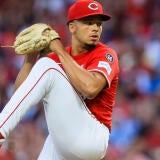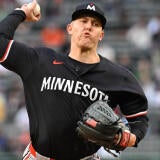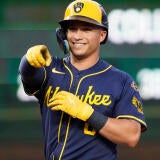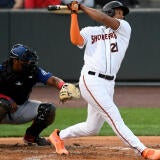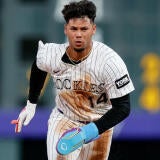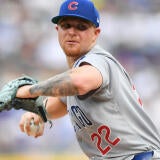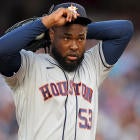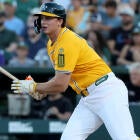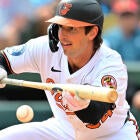Spencer Strider's diminished velocity raises red flags in return from injury
Once known for his elite fastball, Spencer Strider is struggling to regain velocity and effectiveness post-surgery
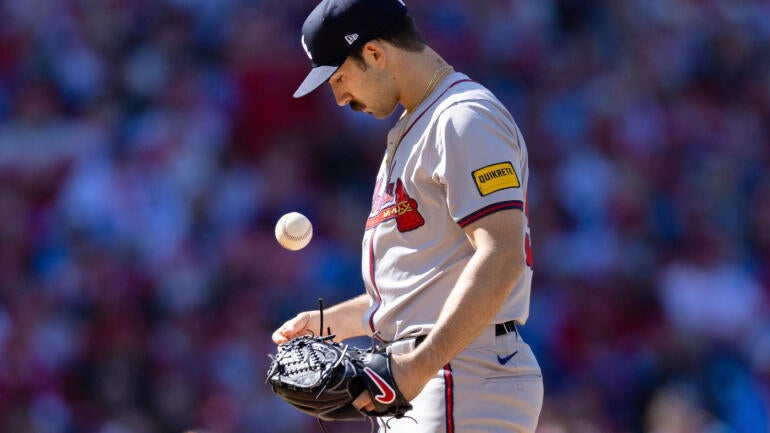
Velocity matters. You can overcome diminished velocity, of course – Logan Webb and Nathan Eovaldi are two of the best pitchers in baseball right now and neither exactly lights up the radar gun – but, all else being equal, a faster fastball is going to play better than a slower one.
And Spencer Strider has lost his fastest fastball. That's not necessarily surprising with Strider coming back from elbow surgery little more than a year ago, but it's the key takeaway from his first two starts of the season, the second of which came Tuesday, in his first start back from a hamstring injury.
Strider struggled against a pretty mediocre Nationals lineup, surrendering four runs over 4.1 innings of work, with just three strikeouts. He got a decent nine whiffs on 75 pitches but just didn't look like himself. Strider, who averaged 97.2 mph in 2023, his last healthy season, topped out at 97.0 Tuesday and averaged 95.0. How much does that matter? Well, let's just look at what Strider's fastball has done in his career when he has thrown it 97 mph or harder, compared to when it has been below 97:
97 mph and below
- 23.3% whiff rate, .394 expected xwOBA allowed
97 and above
- 29.5% whiff rate, .271 expected xwOBA allowed
For some comparison, last season, Hunter Brown had a 29.6% whiff rate and .285 xwOBA allowed on his four-seamer, while Dean Kremer had a 23.2% whiff rate and .373 xwOBA on his four-seamer. It's not quite as simple as that – you can't just remove one of a pitcher's pitches from the rest of his arsenal, because everything plays off everything else – but the point is, at least to this point in his career, Strider's fastball has been an elite pitch when he throws it in the high-90s and a pretty mediocre one when he throws it more in the mid-90s.
And it's an important pitch for Strider. He's not a Max Fried type who mixes in six different pitches, all with different movement profiles and velocity bands. Strider is not a subtle pitcher – he's coming at you with fastballs about 60% of the time, sliders about 30% of the time, and then the occasional changeup (or even more rare curveball) the rest of the time. In 2022, 120 of his 202 strikeouts came off the four-seamer; in 2023, 124 of 281 did.
Strider can still be good if he's sitting at 95 mph, but he probably can't be the best pitcher in baseball. I think he'll improve on his velocity from Tuesday, too – he made that start after missing more than a month with a hamstring injury, and he didn't even go on a real rehab assignment, opting instead for a simulated game before returning. He was sitting at 95.7 mph in his three Triple-A starts before coming back the first time, and was at 95.4 in his first start before the hamstring injury, so it's not like he's fated to average 95 forever after last year's elbow surgery.
But we haven't seen the old velocity come back yet. It's a small sample size, of course, but Strider is also one of the first truly elite pitchers to try to come back from an internal brace rather than a full Tommy John surgery, so we also don't have a ton of other examples we can point to. Strider is kind of an experiment in a way, and that makes it hard to say anything with certainty about how he's likely to pitch moving forward.
But I think you have to be pretty discouraged by what we've seen in his first two starts back. Especially because Strider has struggled to maintain his velocity in both starts so far. That should get better as he continues to build his arm strength up, but it also suggests that he's tiring early despite being at a significant velocity deficit.
I'm aware that I expressed some similar concerns with Jacob deGrom earlier in the season, and he has rediscovered most of his pre-injury velocity and once again looks like one of the best pitchers in baseball. Though, I will note, deGrom still doesn't look quite like his pre-injury form yet; it's just that his baseline was so high that even taking a real step back still puts deGrom among the very best in baseball.
Strider has that kind of upside, but he wasn't quite on deGrom's level before his injury. And he certainly doesn't look to be on that level right now. I'm not writing him off or anything, but I do think you'll probably need to exercise some patience with Strider. I don't expect him to struggle quite as badly as Sandy Alcantara has so far, but that's another cautionary tale – and Alcantara's raw stuff looks closer to what it did prior to the injury than Strider's does. At least so far.
I do still have faith that Strider will probably be a top-20 SP the rest of the way, but I'm not treating him that way right now. There's a buy-low window here if you're bold, but it would probably have to be a true lowball offer – I'm probably not giving up a top-30 pitcher for him, given the risk that he never rediscovers his form or the rest that he just can't stay healthy.
![[object Object] Logo](https://sportshub.cbsistatic.com/i/2020/04/22/e9ceb731-8b3f-4c60-98fe-090ab66a2997/screen-shot-2020-04-22-at-11-04-56-am.png)

